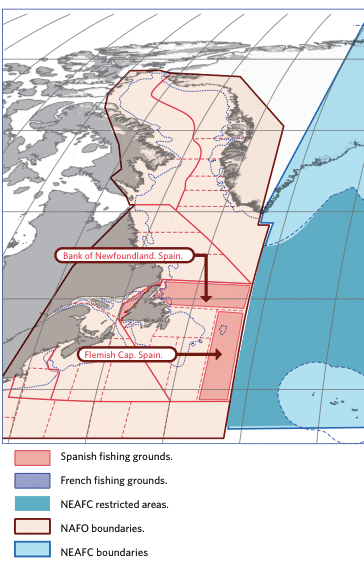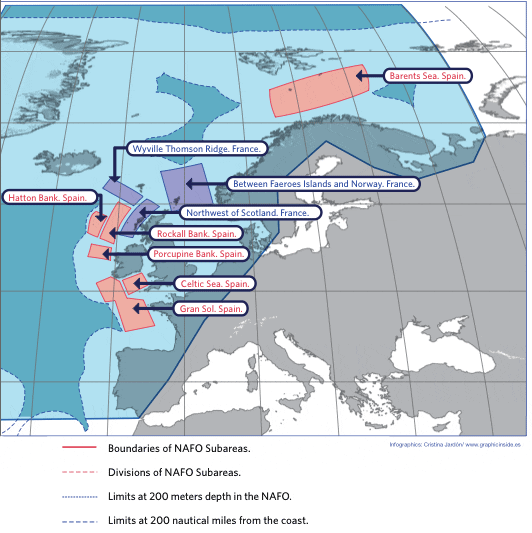THE FRENCH DEEP SEA FLEET
The French deep sea fleet represents only a very small part of the entire French fishing fleet. However, French deep sea trawlers are responsible for almost a third of European deep sea catches. There are 33 French vessels carrying special permits for deep sea fishing, 25 of which are bottom trawlers. These vessels catch more than 10 tonnes per year of deep sea species. However, only a dozen of these vessels specialise in catching deep sea fish (i.e. where deep sea species represent more than 10 per cent of the value of the total catch).
The French bottom trawling deep sea fleet is active in several fishing grounds: mainly in the north-west of Scotland, at the edge of the continental shelf, in the south-eastern part of the Wyville Thomson ridge and between the Faroe Islands and Norway.
THE SPANISH DEEP SEA FLEET

Spain maintains the largest, most powerful fishing fleet in the EU. Half of the Spanish industrial fleet – 1,277 vessels – are trawlers of various types and sizes.
Of these, there are 107 deep sea bottom trawlers operating over a large area in the Atlantic : Northeast Atlantic (NEAFC), the Southwest Atlantic, Central-East Atlantic and Northwest Atlantic (NAFO).
Most of the Spanish deep sea boats that fish in the North East Atlantic are based in Galicia and the Basque country. Deep sea fish caught on the high seas represent 40 per cent of the total value of NE Atlantic catches. The deep sea vessels which fish in the North East Atlantic have their main home ports at Vigo, Cangas, Marín and Ondarroa.
The Spanish deep sea fleet that fishes in the North East Atlantic can be divided into three categories, depending on the length of the ship, the time spent at sea and the species targeted. One is the so- called “cod fishery”. This fleet used to catch cod, until it became overfished, and now mainly targets deep sea species like halibut and redfish. This fishery is focused on the Flemish Cap, Bank of Newfoundland and the Barents Sea.
Another part of the Spanish deep sea fishery is the “NAFO freezers” fleet that develops most of its activity in NAFO and NEAFC waters (Hatton Bank). Its main target species is halibut, as well as cod, haddock and monk fish. Both these fleets spend months continually at sea, freezing the catch on board. The third part of the fleet fishes closer to shore, almost year round, targeting mainly hake, but also blue ling and monk fish, among other deep sea species. It mainly fishes in the NEAFC area, Gran Sol, the Celtic Sea, Porcupine Bank and Rockall Bank.


